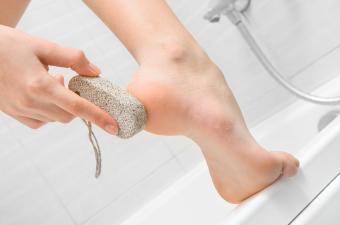
A more recent addition to the always burgeoning plastic surgery industry, laser skin resurfacing has fast become a favorite of individuals in search of a painless, effective fix to aging or damaged skin.
About Laser Skin Resurfacing
In simplest terms, laser skin resurfacing is a procedure that involves removing layers of damaged or wrinkled skin with a laser. Commonly used on the skin around the eyes and mouth, it's favored for its ability to diminish fine lines. However, the treatment is also used on scars, hyperpigmentation (including age spots and melasma) and large pores. In particular, this procedure is used for:
- Minimizing or erasing fine lines around the mouth, on the forehead and cheeks
- Minimizing crow's feet and tightening skin around the eyes
- Softening "pucker marks" (or lines caused by smoking) and frown lines
- Eliminating uneven skin tone and splotchy marks
- Flattening atrophic acne scars
The Benefits
The benefits of laser resurfacing are practically countless. As with so many medical procedures, a patient's greatest fear is usually the potential for pain and the period of recovery. On both counts, laser resurfacing is quite minimal. The generally unpleasant side effects that traditionally accompany alternative procedures are not associated with laser resurfacing. In fact, the treatment is popular largely because it seldom results in bruising, bleeding and scarring. Of course, everyone is different, and it should be noted that individuals susceptible to scarring may not be strong candidates for the procedure.Laser resurfacing is also convenient. Thanks to the speed of the procedure (resurfacing generally lasts one to two hours, depending on the area being treatment), patients are typically able to go home after an allotted recovery period in the doctor's office. The procedure is also beneficial from a doctor's point of view. The laser's effects on the skin are immediately visible, and the doctor can quickly determine the progress as he or she works.
The Complications
Complications are not common, but, as with any medical procedure, they are possible. As mentioned, those prone to scarring may not be viable candidates for laser resurfacing. Though the chances of scarring are minimal, they do exist and should be treated seriously. Other side effects include mild swelling, redness, brown discoloration or crusting of the treatment area. If discoloration occurs, a skin bleaching cream may be used to even out the skin's tone. However, serious side effects (like infections or significant pain) are quite rare. Proper post-operative care should be followed to the letter in order to reap the procedure's best results and enjoy a quick recovery.
The Procedure
Your doctor will determine whether you are a viable candidate for laser resurfacing. This will depend largely on your medical history, current physical condition, age, skin type and pigmentation. Once you're on the chair, you'll receive a local anesthetic, a topical anesthetic accompanied by mild sedation or monitored intravenous sedation. The type, of course, depends on the depth of treatment you'll be undergoing, as well as the location.
The skin is then resurfaced using a state of the art laser. Presently, doctors several different types of lasers. Through the Carbon Monoxide (CO2) laser, high-energy shots of laser light are administered to the skin in short bursts, removing the damaged skin layer by layer. Erbium lasers are favored for use on younger patients who have fewer wrinkles. It is recognized especially for its ability to eliminate acne scars. Another type of laser, called the Fraxel, is used to treat acne scars, sun spots and eye area wrinkles.
During the days following the procedure, the skin is typically kept moist with ointment and covered with surgical dressings. The treated areas must be kept moist during the healing period, which typically takes one to two weeks. Don't be surprised to experience redness at first; it will fade to pink within a few weeks. You may also experience a slight crusting of the treated area. As the skin heals, it is imperative to keep it blocked from sunlight, which can be irritating (and counter the long term effects of the treatment itself!).
The Doctor
Do your research! A plastic surgeon or dermatologic surgeon with extensive laser experience is your best candidate. Visit the American Society of Plastic Surgeons for a comprehensive directory of professionals with over six years of training and experience, at least three which must be in plastic surgery.







